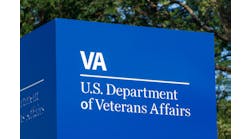DirectTrust, a nonprofit organization that supports health information exchange via the Direct message protocols, has announced continued steady growth in the number of healthcare organizations using its interoperability services during 2018.
The organization also noted an upsurge in the number of Direct message transactions, patient use, and addresses. According to year-end 2018 metrics:
- There were nearly 274 million Direct message transactions between DirectTrust addresses in 2018, a 63-percent increase over the 2017 total of 168 million transactions. There were more than 110 million Direct messages transmitted during the fourth quarter of 2018 alone.
- The number of patients/consumers involved using Direct increased approximately 35 percent to nearly 248,000.
- The number of healthcare organizations served by DirectTrust accredited health information service providers (HISPs) increased 30 percent to nearly 139,000, compared with approximately 107,000 at year-end 2017.
- The number of trusted DirectTrust addresses able to share PHI across the DirectTrust network increased 16 percent to more than 1.8 million since the end of 2017.
- Eleven healthcare organizations joined DirectTrust during 2018, bringing the organization’s total membership to 115.
Last July, DirectTrust named former Cerner executive Scott Stuewe its new CEO to replace founding CEO Dr. David Kibbe. In a recent interview with Healthcare Informatics, Stuewe spoke about working more closely with EHR vendors and expanded opportunities for his organization’s trust framework.
He told Healthcare Informatics at the time that his organization could make more headway by engaging with the EHR (electronic health record) vendors who so far have not been very engaged with DirectTrust. “There are some gaps in features among the EHRs that frankly are the same gaps we saw in query-based exchange in CommonWell. There are usability problems; the way a given feature surfaces in one EHR is so different than another that you can’t even do the same work flow across the two systems,” Stuewe said.
Stuewe also noted that DirectTrust’s technical trust framework is about “stretching the highest security mechanism across identity-proofed endpoints,” which, he said, “is kind of a unique model.”
A recent data brief from the Office of the National Coordinator for Health IT (ONC) revealed that about four in 10 surveyed hospitals participated in more than one nationwide health information exchange network, such as Surescripts, the e-Health Exchange, DirectTrust, CommonWell, or Carequality. Surescripts was the most commonly network used; 61 percent of hospitals participated. The next highest participation rates were in DirectTrust and the e-Health Exchange; about a quarter of hospitals participated in each.
